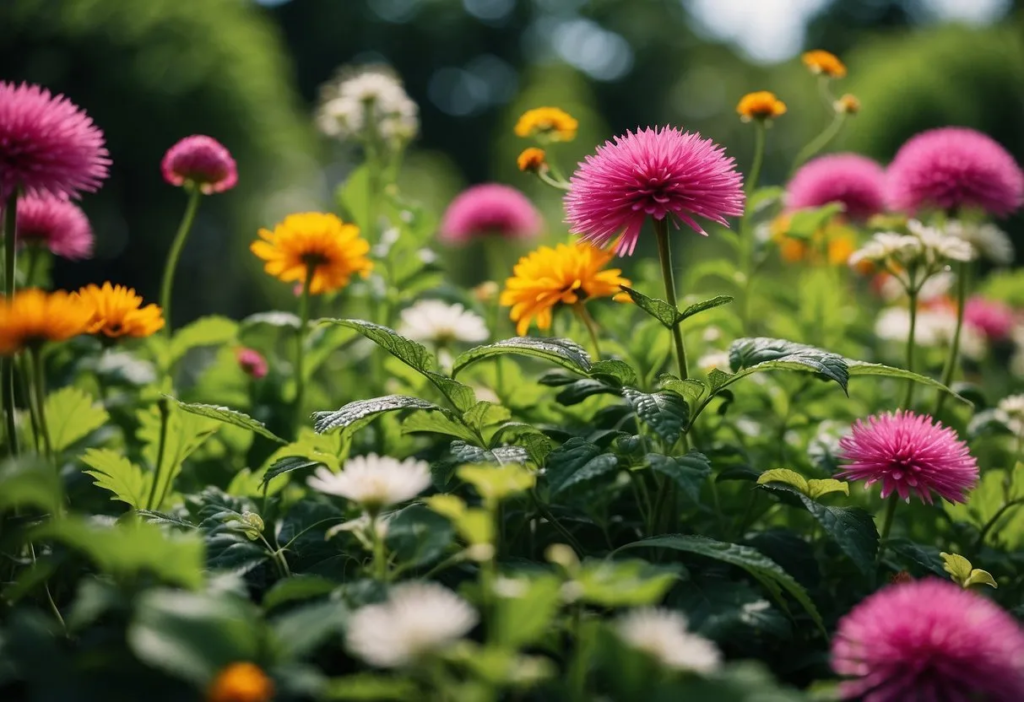
Turning your yard into an untamed haven will instantly transport you outside. There are many methods to create a tranquil haven, draw in wildlife, or add vivid hues to your yard. You may build a beautiful and dynamic green space in many ways. The delight of witnessing your garden come to life with birds, bees, and butterflies is what makes this project genuinely fulfilling.
Starting a natural garden doesn’t require you to be an experienced gardener. Anyone can create a place that supports local wildlife and grows native flora with a little forethought and imagination. Furthermore, it’s a fantastic method to improve the environment in your own garden.
Fairy Tale Footpaths
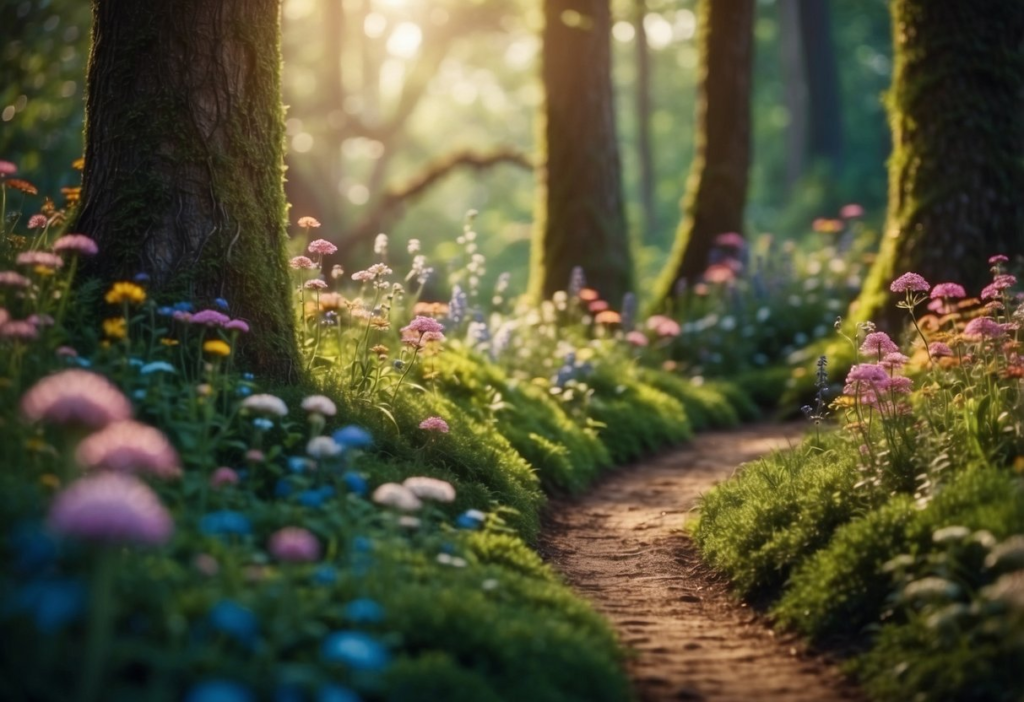
Transform your garden with enchanting footpaths made of smooth stones. Choose flat, easy-to-walk-on stones that lead visitors through a whimsical garden.
Edge the path with delicate ferns, moss, or creeping thyme to create a lush, inviting look. Add playful touches like tiny fairy statues or whimsical mushroom ornaments for extra charm.
Consider incorporating vibrant vining plants such as morning glory or sweet peas to climb up trellises along the path. This will make the pathway even more enchanting and engaging for both children and adults.
Butterfly Haven

Turning your garden into a butterfly haven supports local wildlife and adds beauty to your space. Start by planting nectar-rich flowers like milkweed and coneflower to attract a variety of butterflies.
Create sheltered spots with shrubs and plants to protect butterflies from harsh weather and predators. Adding flat stones can provide warm resting spots for these delicate creatures.
Avoid pesticides, as they can harm butterflies and their larvae. Opt for natural pest control methods to keep your garden safe for these beautiful insects. For more ideas on crafting a butterfly-friendly garden, explore resources dedicated to creating vibrant butterfly habitats.
Secret Zen Corner
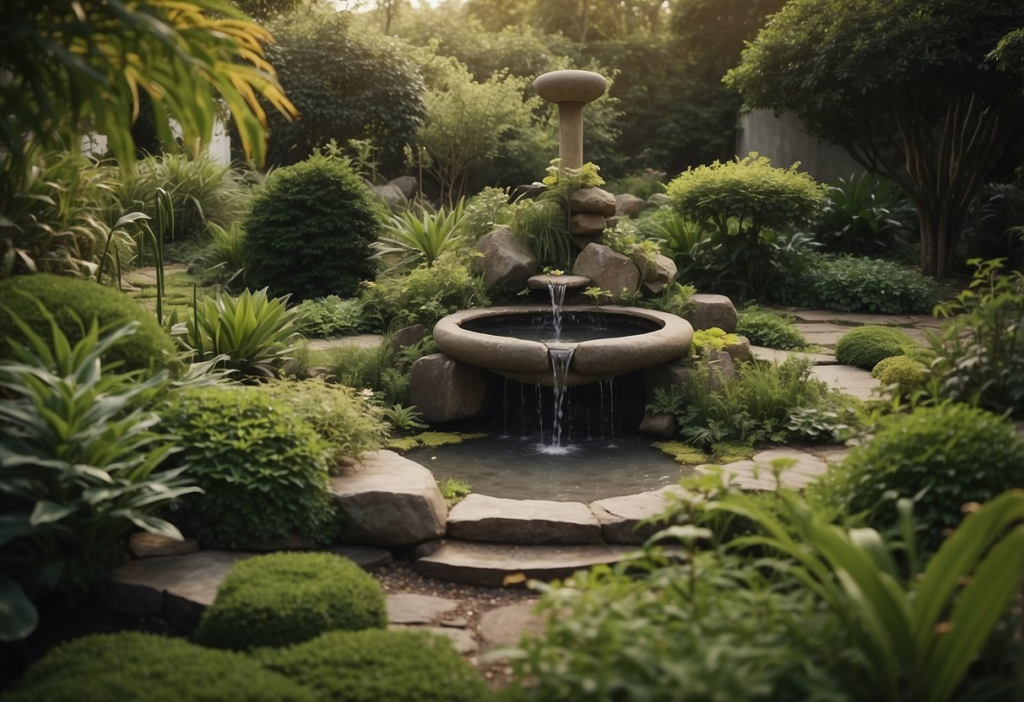
Design a peaceful Secret Zen Corner with a small, soothing water feature surrounded by smooth pebbles. The gentle sound of flowing water will create a relaxing atmosphere.
Incorporate ferns and hostas to simulate a serene forest floor. These plants thrive in shaded areas and add to the tranquil setting.
Enhance the calming vibe with a small stone pagoda or lantern, which will further emphasize the serene and meditative nature of your Zen corner.
Magical Mushroom Ring

Add a touch of magic to your garden with a whimsical mushroom ring. Picture stepping outside and entering a fairy-tale world.
Create your ring using brightly colored ceramic mushrooms for a charming, vibrant addition to your garden.
Fairy ring mushrooms are another enchanting choice, perfect for evoking a mystical atmosphere. Explore various fairy ring ideas to find inspiration for your magical garden.
Wildflower Wonderland
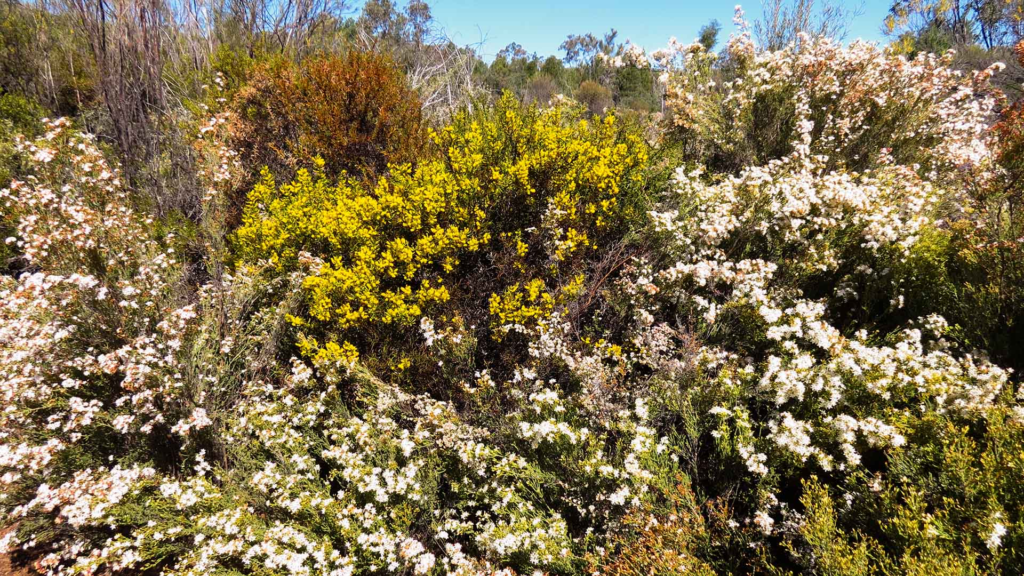
Fill your garden with a dazzling array of wildflowers to create a Wildflower Wonderland. Choose a mix of blooms in purple, blue, red, yellow, and orange, such as tickseed, black-eyed Susan, and verbena.
Include wild grasses that attract pollinators to make your garden buzz with life. Opt for native species for better adaptation and growth. Ensure you plant in a sunny spot with well-draining soil.
Prepare the soil by loosening it and removing weeds. Scatter the seeds evenly and lightly cover them with soil to promote a thriving and colorful Wildflower Wonderland.
Whimsical Water Feature

Introduce a whimsical water feature to add enchantment to your garden. Imagine a sparkling fountain or a playful goblin fountain reflecting your unique style.
Consider a simple birdbath or a pond with colorful fish to attract wildlife and create a serene ambiance. Adding a winding stream can further enhance your garden’s charm and dynamic look.
Meandering Stone Paths
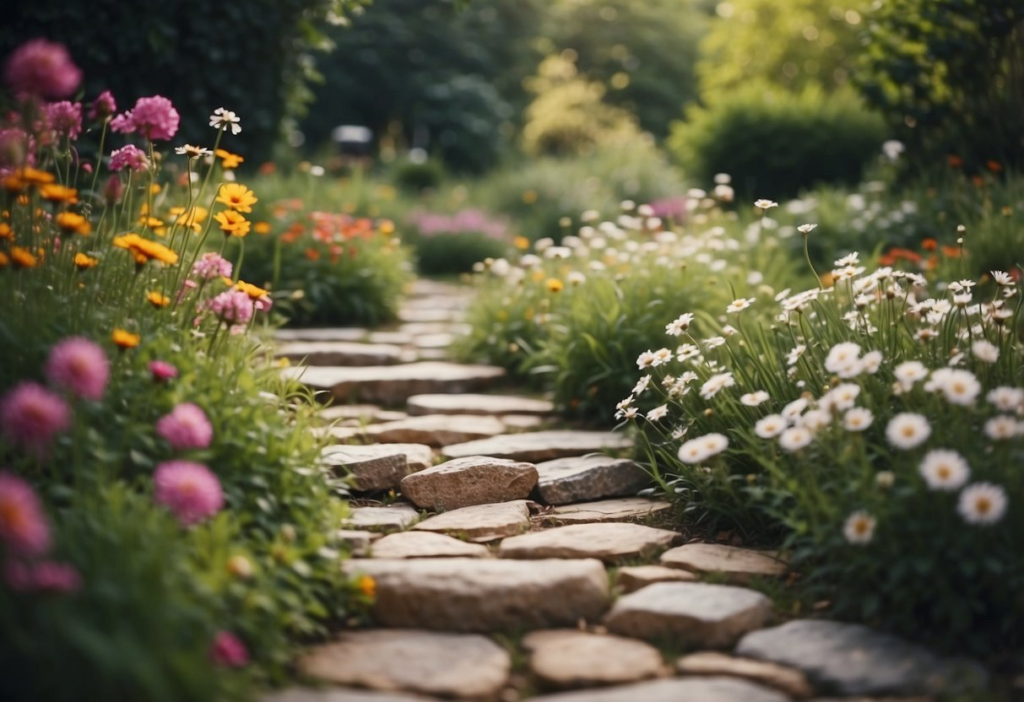
Add charm to your garden with meandering stone paths that wind through your space. Instead of straight lines, let the paths curve and twist to complement the natural beauty of your garden.
Use a variety of stones to create texture and interest. Combining large flagstones with small pebbles can make the path visually appealing.
Incorporate stepping stones surrounded by gravel or mulch for a practical and attractive design. This rustic approach invites exploration and enhances the garden’s overall feel. For additional inspiration, explore garden path ideas.
Charming Chickens Roaming

Chickens bring delightful charm to your garden with their colorful feathers and playful behavior. Their presence can liven up any yard and watching them scratch and peck can be quite soothing.
If you have the space, allow your chickens to roam freely. They help control pests and naturally fertilize your garden.
Create a chicken-friendly environment by planting their favorite herbs and vegetables. This will keep them content and reduce the risk of them damaging your main garden. For more ideas, check out resources like Tilly’s Nest.
Rustic Garden Swing
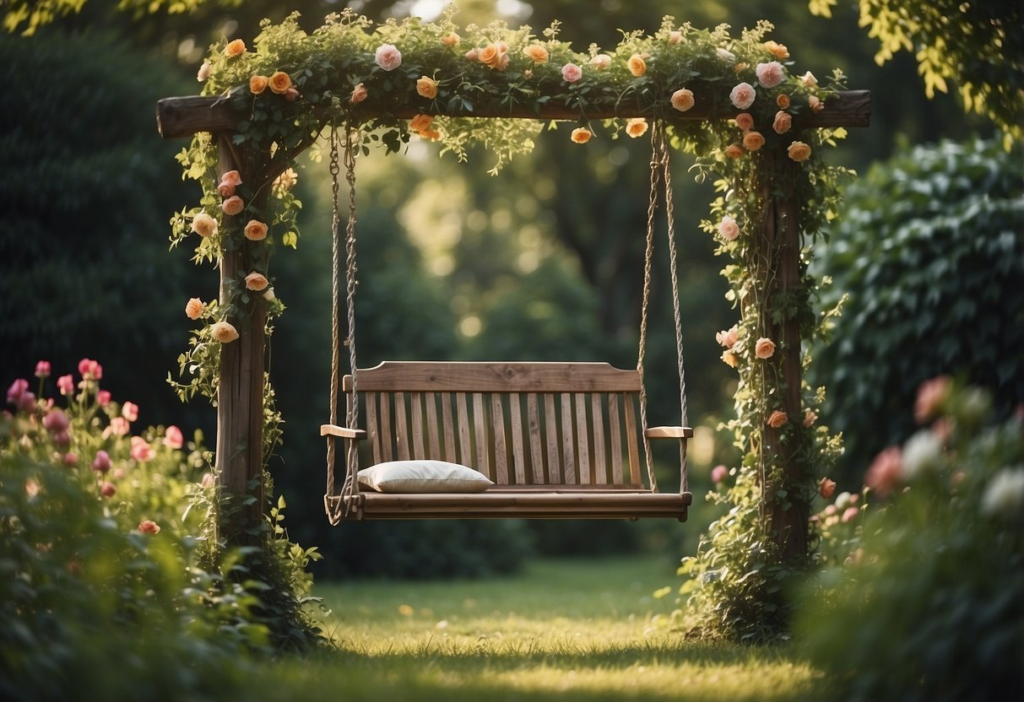
Adding a rustic garden swing enhances the charm and relaxation of your outdoor space. Choose a wooden swing design that complements a nature-themed backyard.
Hang the swing under a large tree to provide shade and comfort. Add cushions or throw blankets to create a cozy seating area.
For a unique touch, repurpose materials like an old pallet or vintage bench to build your swing. Explore garden swing ideas for more creative inspiration.
Birdsong Symphony

Create a birdsong symphony in your garden to enjoy peace and joy. Install bird tables to attract various bird species with their melodic calls.
Add a bee house or birdhouse to provide shelter for wildlife. These additions help create a safe space for birds to nest and rest.
Mix native plants like tickseed and black-eyed Susan to attract even more birds. Include water features like a small pond or birdbath to invite birds for bathing and drinking, enhancing your garden’s natural beauty.
Benefits of a Wild Garden

A wild garden offers numerous benefits, enriching both the environment and your personal enjoyment. Native plants, biodiversity, and low maintenance contribute to a harmonious space for both wildlife and people.
Environmental Benefits
A wild garden promotes biodiversity by using native plants that provide food and shelter for local wildlife, including pollinators like bees and butterflies. This supports the broader ecosystem.
Various organisms, such as fungi and small mammals, enhance soil health through natural processes. The decomposition of leaf litter enriches the soil with organic matter, improving its structure and water retention.
Wild gardens also require less irrigation and fewer chemicals compared to traditional gardens. Native plants are adapted to local conditions and are generally more drought-resistant. Reducing pesticide and fertilizer use helps prevent water pollution and supports nearby water sources.
Aesthetic and Personal Enjoyment
A wild garden offers unique, natural beauty with its informal, relaxed look. The variety of plant species creates a colorful and ever-changing landscape throughout the seasons.
Creating a wild garden can be a rewarding and educational experience. Observing the interactions between plants and wildlife provides a close-up view of nature. The sight of thriving birds, butterflies, and other creatures can be very satisfying.
Wild gardens are also low maintenance. Once established, they need minimal care, allowing you more time to enjoy your garden rather than constantly tending to it. This makes it an ideal choice for those who want a beautiful, vibrant space with less upkeep.
Planning Your Wild Garden

Creating a wild garden involves selecting native plants and designing thoughtful pathways. This approach helps preserve local wildlife and provides a natural, beautiful environment.
Choosing the Right Plants
Focus on native species that support local wildlife. Native plants are well-suited to your area’s soil and climate, making them easier to grow and maintain.
Include wildflowers like cornflowers, which come in various colors and reseed themselves, ensuring continuous beauty.
Plants that attract bees, butterflies, and birds are essential. For instance, milkweed supports monarch butterflies. A diverse mix of flowers, shrubs, and grasses offers food and shelter for different wildlife.
Group plants with similar water and sunlight needs to help them thrive and reduce maintenance.
Designing Natural Pathways
Natural pathways enhance both functionality and aesthetics in a wild garden. They help navigate the garden and create a sense of exploration.
Use materials like gravel, wood chips, or stepping stones to craft your paths. These materials blend seamlessly with the natural environment and are easy to maintain.
Curved paths often appear more natural and can make small gardens feel larger by offering a winding, scenic route. Add elements like logs or rocks along the edges to enhance the natural look and provide habitats for small creatures.
Ensure paths are wide enough for comfortable walking, typically around 2-3 feet, to make your garden enjoyable for you and your guests.
Maintaining a Wild Garden

Maintaining a wild garden involves proper watering and minimal pruning to keep it thriving and attractive.
Watering and Irrigation Tips
Proper watering is crucial for the health of a wild garden. Most wildflowers need about 1 inch of water per week. Use a rain gauge to measure this and water deeply once or twice a week to encourage strong root growth.
Early morning is the best time for watering to reduce evaporation and prevent plant diseases. Soaker hoses or drip irrigation systems can be effective.
Mulching with organic materials like straw or wood chips helps retain moisture, reducing the need for frequent watering and keeping soil cool.
Pruning and Deadheading
Pruning is essential for keeping your garden tidy and healthy. Remove dead or diseased growth to prevent disease spread and trim overgrown plants to maintain their shape and encourage new blooms.
Deadheading, or cutting off spent flowers, helps keep the garden neat and often promotes more blooms. Use sharp scissors or pruning shears for clean cuts.
Prune in late winter or early spring before new growth starts. Avoid heavy pruning in late summer or fall, as it can stress plants before winter. Regular, light pruning maintains a natural look while keeping your garden in good shape.
